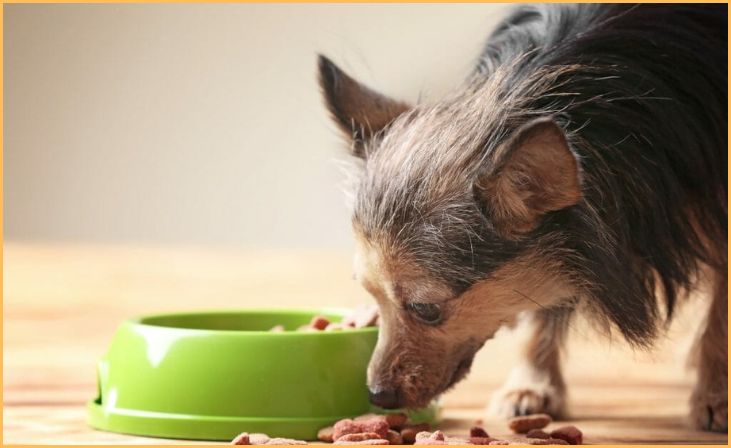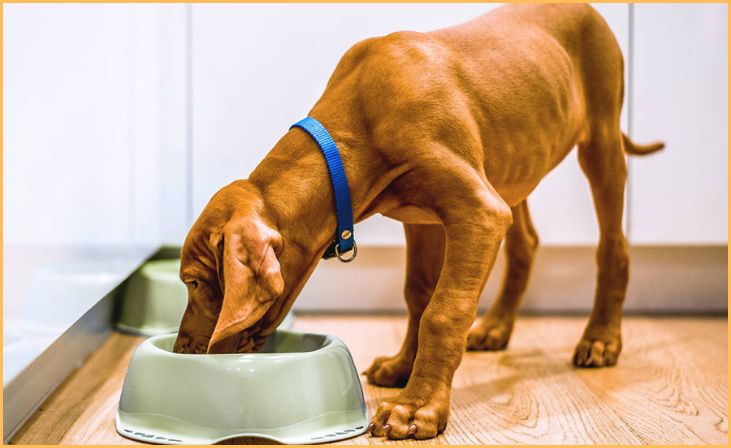How to Stop Puppy Food Aggression – In the early stages of a puppy’s life, addressing food aggression is crucial for fostering a harmonious relationship and ensuring the safety of both the pet and its owners. Food aggression, characterized by behaviors like growling, snapping, or possessiveness around food, can stem from various factors, including instinctual tendencies and a lack of proper training.
This guide outlines practical steps to curb food aggression in puppies, emphasizing positive reinforcement, basic training techniques, and creating a calm feeding environment. Recognizing the signs and understanding the underlying causes are essential for implementing effective strategies.
By following this comprehensive plan and remaining consistent, pet owners can establish a trusting bond with their puppy and promote a positive mealtime experience.
Importance of addressing food aggression early
Addressing food aggression in puppies early on is crucial for several reasons. Firstly, it helps prevent the development of ingrained aggressive behaviors, creating a foundation for a well-behaved and sociable adult dog. Untreated food aggression can escalate, posing a risk to both the puppy and those around them, including other pets or family members.
Early intervention is essential for building a positive relationship with the puppy. By addressing food aggression promptly, owners establish themselves as leaders and providers, promoting trust and respect. This, in turn, contributes to a healthier bond between the pet and its owners.
Moreover, early intervention simplifies the training process. Puppies are highly adaptable, and their behaviors are more malleable during the formative stages of their development. Tackling food aggression promptly allows for effective implementation of positive reinforcement and training techniques, setting the stage for a well-adjusted and obedient adult dog. Overall, addressing food aggression early is an investment in the long-term well-being and positive behavior of the puppy.
Also, Read – Most Popular Types of Shepherds
How to Stop Puppy Food Aggression
Start Early

Start addressing food aggression in puppies as early as possible. Begin by hand-feeding to build trust, associating your hand with positive experiences. During meals, add more food to the bowl to create a positive association with your presence. Introduce a release command, like “leave it,” and use it consistently.
Avoid punishment, focusing on positive reinforcement instead. Incorporate basic obedience training commands, such as “sit” and “stay.” Control access to resources, reinforcing your role as the provider. If issues persist, seek professional help for personalized guidance. Consistency and patience are crucial for fostering positive behavior.
Hand-Feed
Hand-feed your puppy to establish trust and reduce food aggression. This builds a positive association between your hand and mealtime, fostering a sense of security. Start by offering a few kibbles from your hand and gradually increase the amount.
Encourage gentle behavior during hand-feeding, rewarding calmness with praise. This not only prevents resource guarding but also strengthens the bond between you and your puppy.
The goal is to make the presence of your hand a positive and non-threatening aspect of their meal routine. Consistent hand-feeding promotes a positive association with human interaction around food, minimizing the likelihood of food-related aggression.
Add Food to the Bowl
Add food to your puppy’s bowl while they are eating to discourage food aggression. This teaches them that your approach during mealtime is not a threat but, in fact, a positive experience. Gradually approach and drop a few more pieces of kibble into the bowl while your puppy is eating.
This action prevents any defensive reactions and helps your puppy associate your presence with additional delicious rewards. Consistent positive reinforcement during meals reinforces the idea that people near their food source are a positive presence, reducing the likelihood of food-related aggression. This technique establishes trust and creates a calm environment around feeding time.
Trade-Up
Practice the “trade-up” method to address food aggression in your puppy. Offer a more enticing treat or higher-value food item in exchange for what they currently have. This teaches your puppy that giving up possessions results in something even better.
Gradually, incorporate this technique during meals, rewarding your puppy for relinquishing their food willingly. Consistent use of the trade-up method reinforces positive behavior, reduces guarding tendencies, and encourages a cooperative attitude.
By associating your approach with better rewards, your puppy learns that interactions during mealtime are opportunities for positive exchanges, diminishing food-related aggression over time.
Also, Read – Thoughtful Pit Bull Memorial Ideas
Use a Release Command

Teach your puppy a release command, such as “leave it” or “drop it,” to manage food aggression. During meals, gently introduce the command and reward them for complying. This establishes a cue for them to pause or relinquish items without fear.
Consistent use of the release command fosters communication and reinforces positive behavior around food. Practice this in various situations, gradually increasing difficulty.
Whether it’s a toy or a treat, the release command becomes a signal that encourages your puppy to let go willingly. This not only prevents resource guarding but also enhances obedience and trust between you and your puppy.
Avoid Punishment
Avoid punishing your puppy for food aggression. Punishment can escalate fear and worsen the problem. Instead, focus on positive reinforcement to encourage desirable behavior. Reward calm and non-aggressive behavior around food with treats or praise.
Create a positive association between your presence and mealtime, ensuring your puppy sees you as a source of good things. Punishment can lead to defensive behaviors, hindering the bond between you and your puppy.
Patience and positive reinforcement contribute to a trusting relationship, making it more likely your puppy will feel secure and non-aggressive during mealtime interactions. If challenges persist, seek guidance from a professional trainer or behaviorist.
Obedience Training
Incorporate obedience training to curb food aggression in your puppy. Teach fundamental commands like “sit,” “stay,” and “come” during non-meal situations. Reinforce these commands consistently, creating a foundation for respectful behavior.
Use commands to manage your puppy’s actions around food, promoting self-control. For instance, ask your puppy to “sit” before receiving their meal. This not only prevents impulsive behavior but also establishes your leadership.
Consistent obedience training fosters a strong bond, improves communication, and encourages positive behavior. The skills learned in training sessions can be applied to mealtime, promoting a calm and controlled environment that reduces the likelihood of food-related aggression.
Control Resources
Control access to resources, including food, toys, and treats, to address food aggression in your puppy. Make it clear that you are the provider and gatekeeper of these valuable items. Prioritize teaching your puppy to wait patiently for access to resources.
Use commands like “wait” and “stay” to instill discipline. Reward compliance with positive reinforcement. By establishing your role as the controller of resources, you minimize the likelihood of aggressive behaviors.
Consistency is key—apply this practice consistently to build a foundation of respect and cooperation between you and your puppy. This helps create a harmonious environment around valuable possessions, reducing the risk of food-related aggression.
Enlist Professional Help
If food aggression persists in your puppy, enlist professional help. A qualified dog trainer or behaviorist can provide tailored guidance and strategies. They assess the specific triggers and behaviors, offering effective solutions to address the issue.
Professional assistance ensures a comprehensive approach, considering both the puppy’s individual temperament and the owner’s lifestyle. Early intervention by experts can prevent the escalation of food aggression into more severe behavioral problems.
Don’t hesitate to seek professional support to create a customized plan that promotes a positive and secure relationship with your puppy, fostering a healthy environment for both the pet and owner.
Desensitize to Touch

Gradually desensitize your puppy to touch during meals to prevent food aggression. Gently touch different parts of their body, especially around the head and mouth, while they eat. Pair each touch with positive reinforcement like treats or praise.
This helps your puppy associate human touch with positive experiences and reduces sensitivity during mealtime interactions. Progress slowly, increasing the duration and intensity of touches as your puppy becomes more comfortable.
Desensitizing to touch fosters a calm and cooperative attitude, reinforcing trust and minimizing the risk of defensive behaviors. Consistent positive reinforcement builds a positive association between human contact and mealtime, contributing to a more relaxed feeding environment.
Conclusion
In conclusion, addressing puppy food aggression early is a fundamental investment in fostering a positive and well-adjusted adult dog. By recognizing and mitigating aggressive behaviors during feeding, owners establish a foundation of trust and respect.
This early intervention not only ensures the safety of both the puppy and those around it but also simplifies the training process, taking advantage of the puppy’s adaptability during its formative stages.
With consistent positive reinforcement and a patient approach, pet owners can cultivate a strong bond and enjoy a harmonious relationship with their canine companions.
FAQs
Common signs include growling, snapping, possessiveness around the food bowl, stiff body language, and defensive posturing.
While individual temperament plays a significant role, certain breeds may have predispositions. However, proper training and early intervention can mitigate these tendencies.
Choose a quiet area, establish a consistent feeding schedule, avoid disturbances, and incorporate positive reinforcement during meals.







